Masterpiece Story: L.O.V.E. by Maurizio Cattelan
In the heart of Milan, steps away from the iconic Duomo, Piazza Affari hosts a provocative sculpture by Maurizio Cattelan. Titled...
Lisa Scalone 8 July 2024
9 June 2024 min Read
John Singer Sargent’s Nonchaloir (Repose) is a masterpiece of American Impressionism. It explores a poetic moment of aristocratic silence.
John Singer Sargent (1856–1925) was an American painter who was one of the leading society portrait painters in the late 19th and early 20th centuries. His paintings’ sumptuous backgrounds and elegant clothes made Sargent extremely popular with wealthy American, British, and French patrons.
However, despite his runaway success, Sargent eventually grew tired of society portraits and abandoned conventional portraiture in 1909. He began to focus on landscapes and genre scenes. Nonchaloir (Repose), painted in 1911, is a masterpiece of his genre paintings. It explores a poetic moment of aristocratic silence.
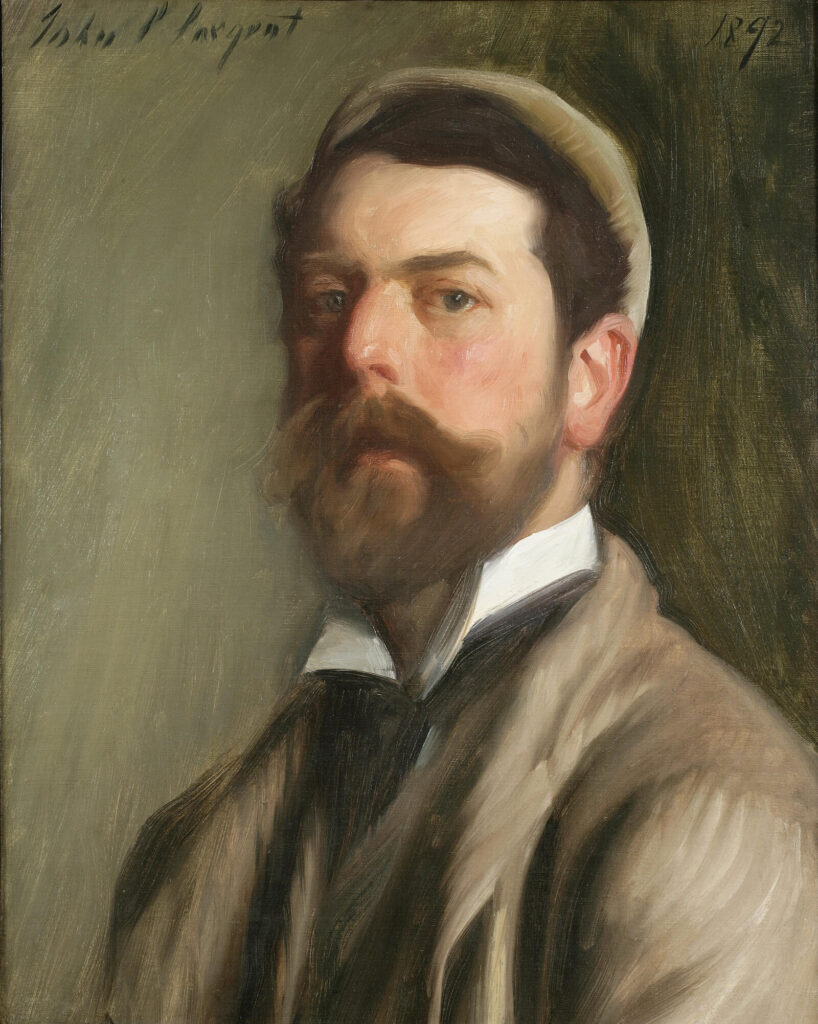
John Singer Sargent, Self-Portrait, 1892, National Academy of Design, New York City, NY, USA.
Nonchaloir is a small oil on canvas measuring 63.8 by 76.2 cm (25 1/8 by 30 in). It depicts a woman reclining on a loveseat during an afternoon nap. To her left is a wooden gilt marble-top table with a small red wooden box. Above her is the bottom edge of a large gilt-framed painting.
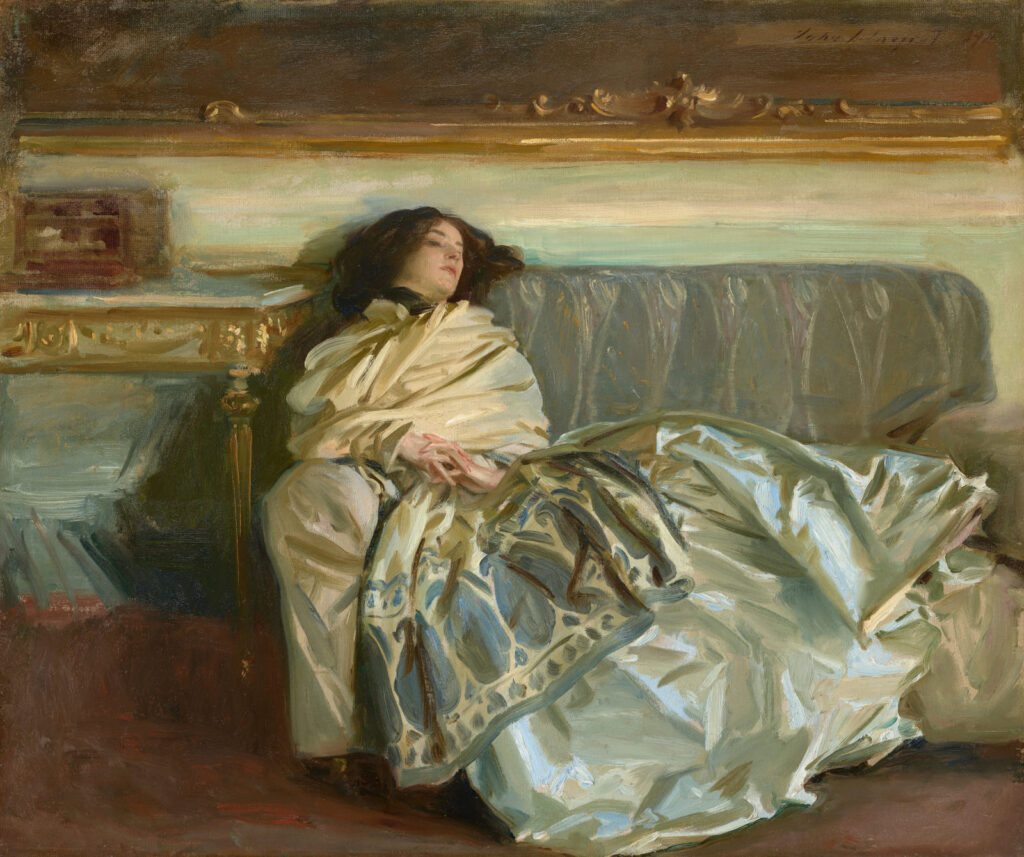
John Singer Sargent, Nonchaloir (Repose), 1911, National Gallery of Art, Washington, DC, USA.
The unseen large painting implies the huge cavernous room surrounding this small, silent scene. John Singer Sargent intentionally zooms in and crops the perspective to allow the viewer to focus on the woman’s delicate beauty. Her image is not a formal standing portrait but an informal figural study. It is a loving snapshot of domestic tranquility.
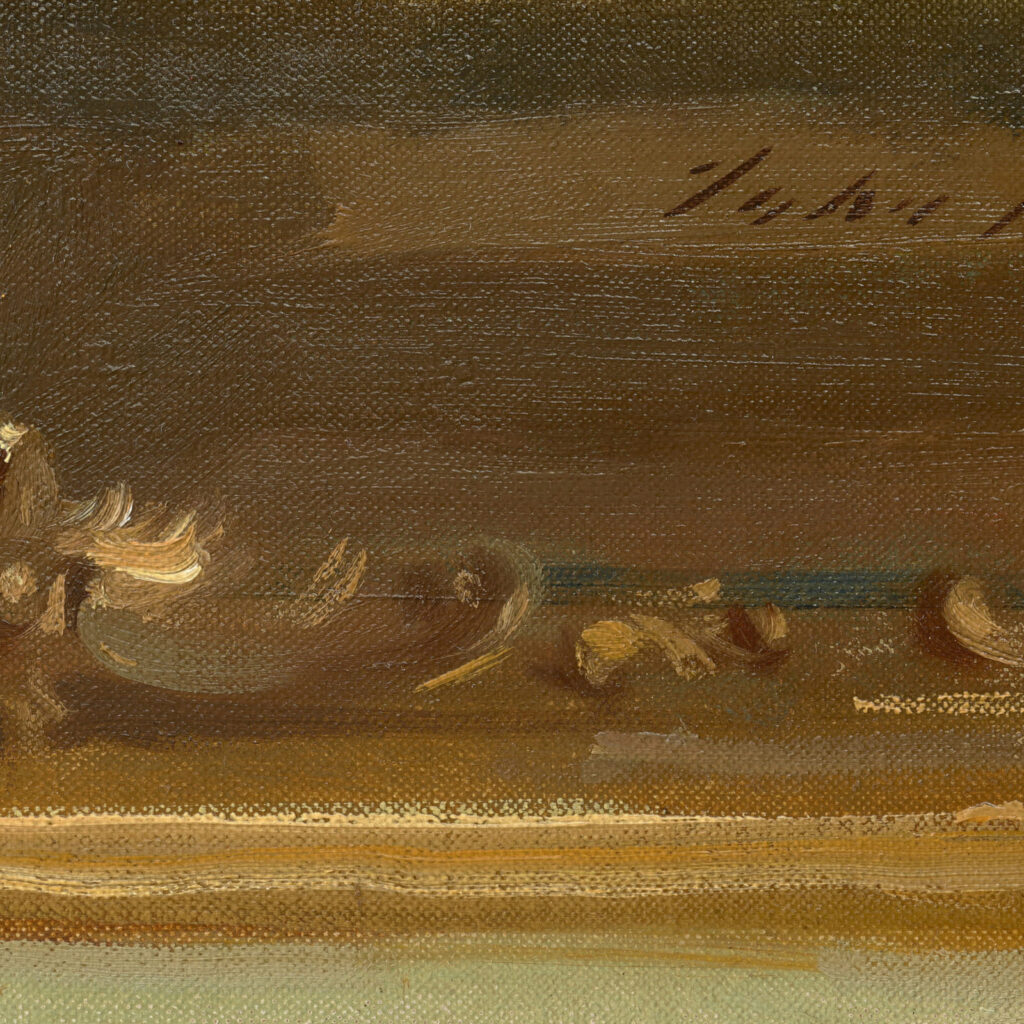
John Singer Sargent, Nonchaloir (Repose), 1911, National Gallery of Art, Washington, DC, USA. Detail.
John Singer Sargent is famous for his grand manner portraits, but by 1909, he was embracing Impressionism in his private smaller pieces. Nonchaloir is late impressionistic technique at its best.
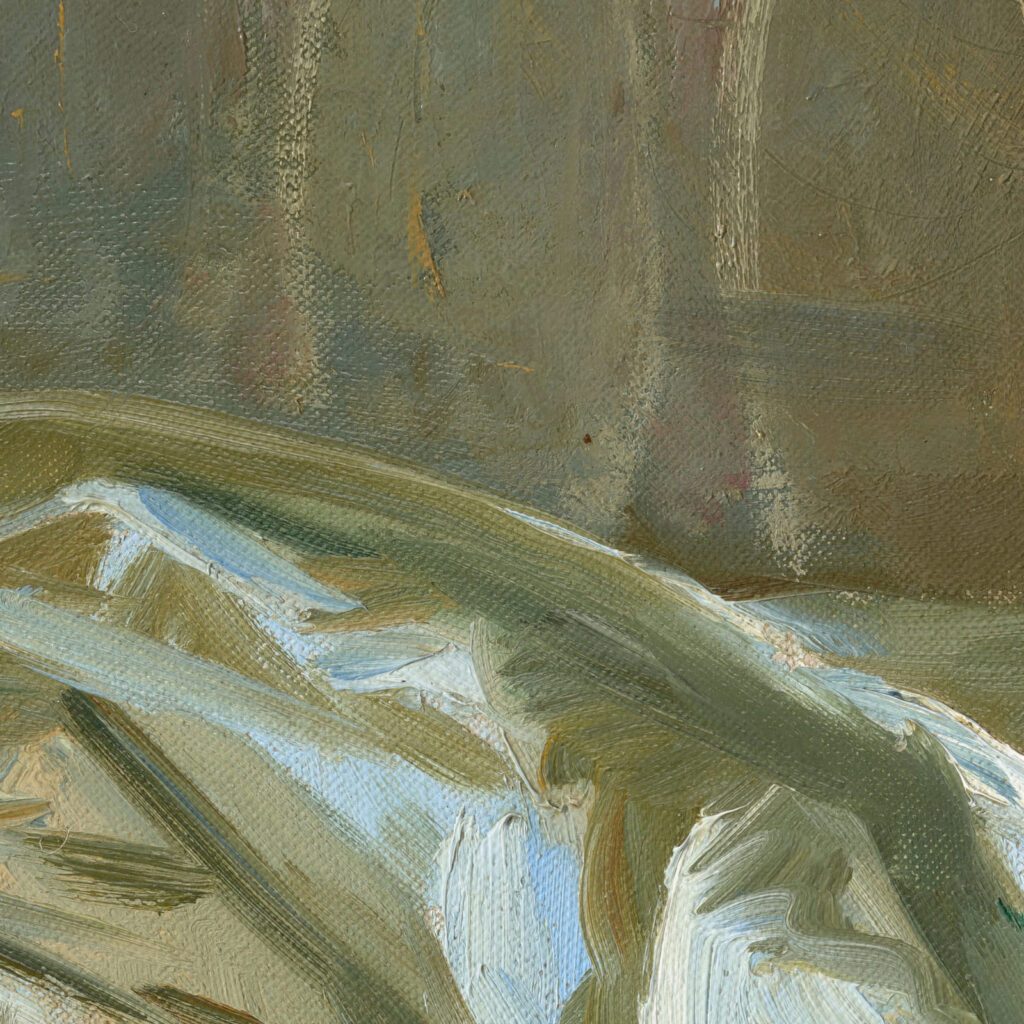
John Singer Sargent, Nonchaloir (Repose), 1911, National Gallery of Art, Washington, DC, USA. Detail.
Sargent first created the foundation of a white ground layer. Then, he painted the image in fluid, thick motions. He applied the paint in broad brushstrokes that were added layer upon layer, creating a textured impasto.
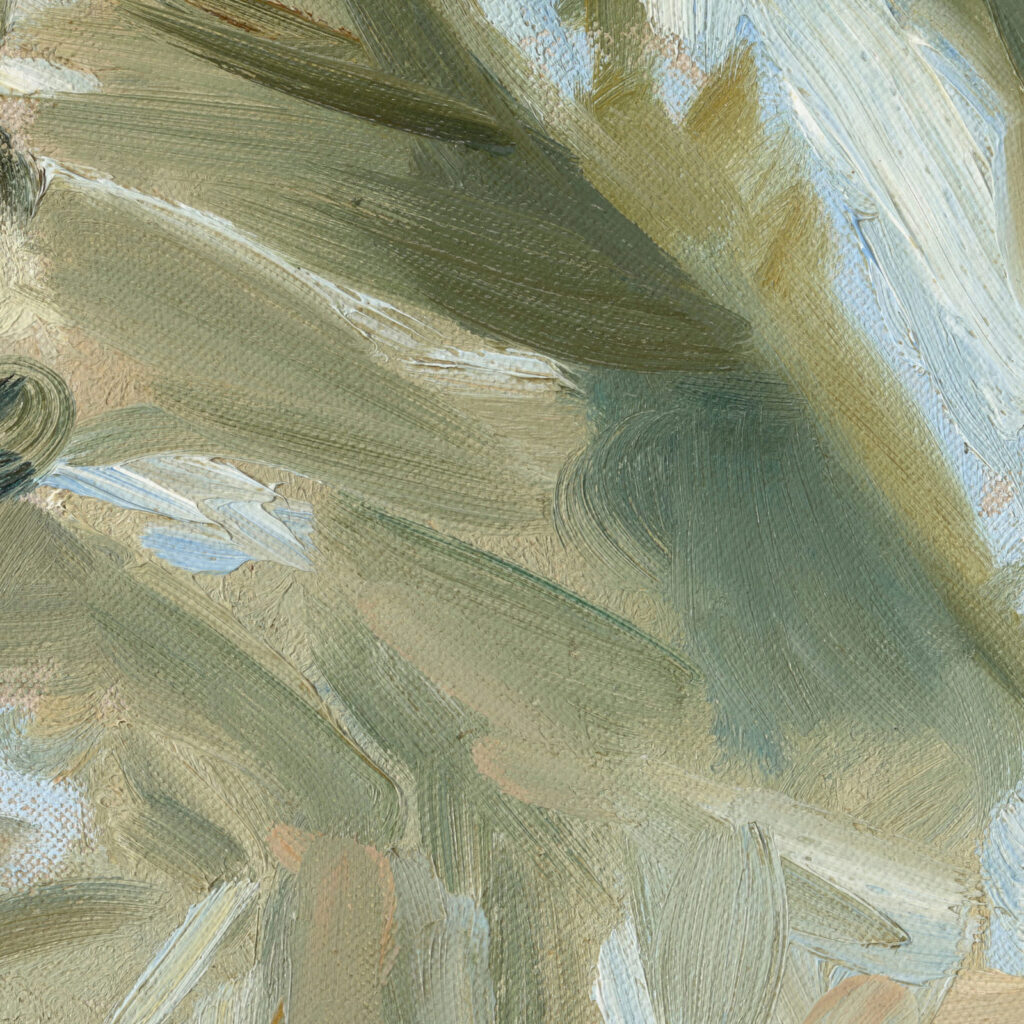
John Singer Sargent, Nonchaloir (Repose), 1911, National Gallery of Art, Washington, DC, USA. Detail.
Like many Impressionist paintings, Nonchaloir has a tactile appearance. It also captures a specific unimportant moment. It is a scene of everyday life. Nothing important but interesting.
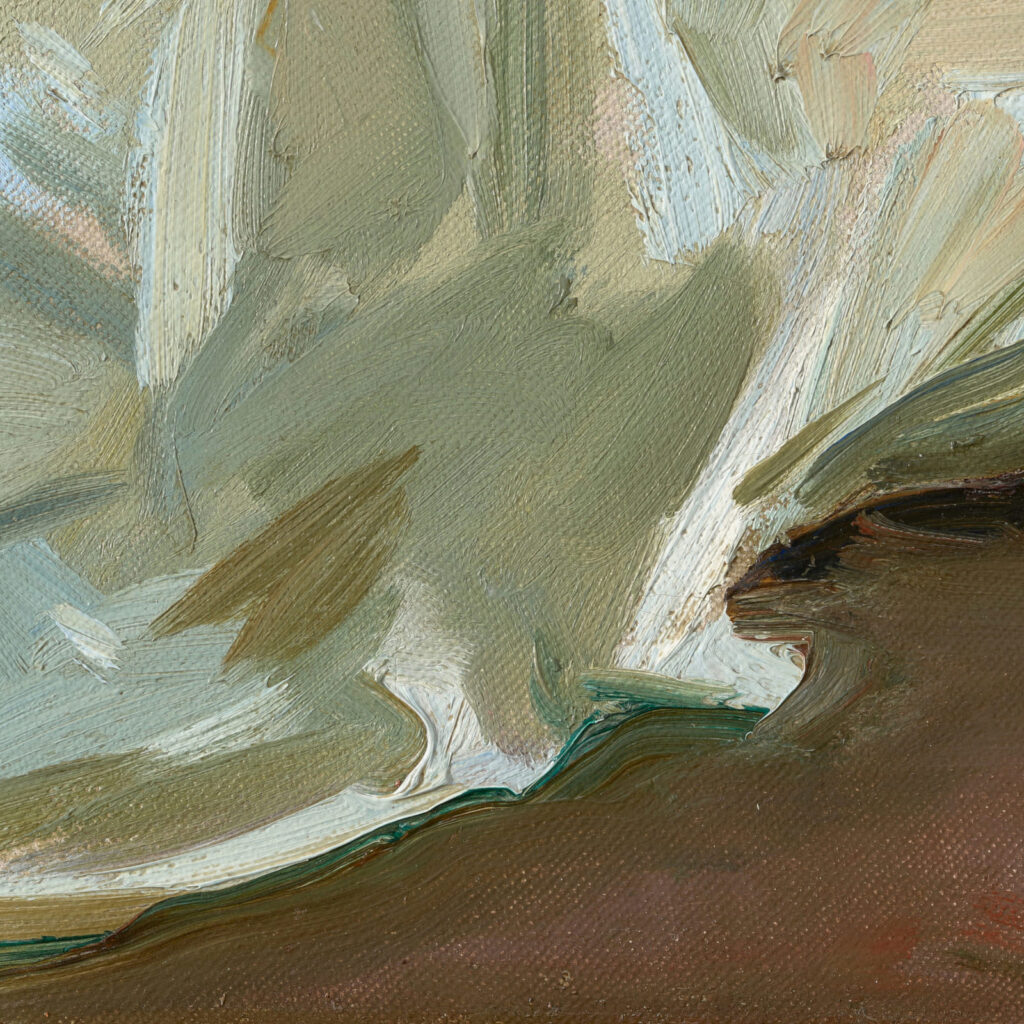
John Singer Sargent, Nonchaloir (Repose), 1911, National Gallery of Art, Washington, DC, USA. Detail.
Unlike the society patrons captured in the artist’s many portraits, the figure of Nonchaloir is not named in the painting’s title. A casual viewer without background research would assume the woman is an unknown model. However, the reality is entirely the reverse.
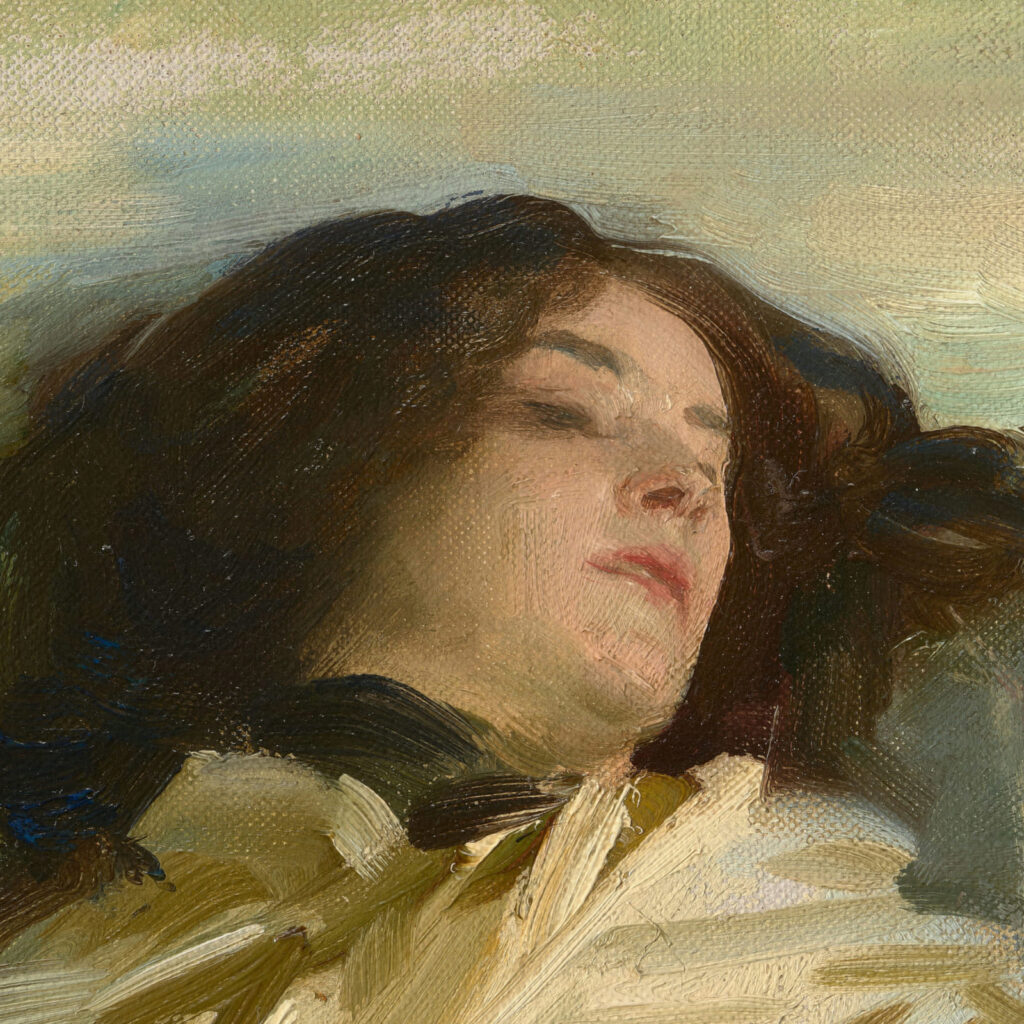
John Singer Sargent, Nonchaloir (Repose), 1911, National Gallery of Art, Washington, DC, USA. Detail.
The woman depicted in the painting is Sargent’s 18-year-old niece, Rose-Marie Ormond (1893–1918), the daughter of his sister, Violet Sargent Ormond. Rose-Marie was a favorite subject of Sargent because she was not only a beloved niece but because she had an energetic and strong character that Sargent found charming.
Sargent captured her likeness in eight oil paintings, including Nonchaloir and many watercolors. He produced this painting while visiting his sister’s family in Switzerland. Therefore, it can be assumed that Nonchaloir captures the grand interior of the Ormond vacation home or vacation rental during a quiet afternoon.
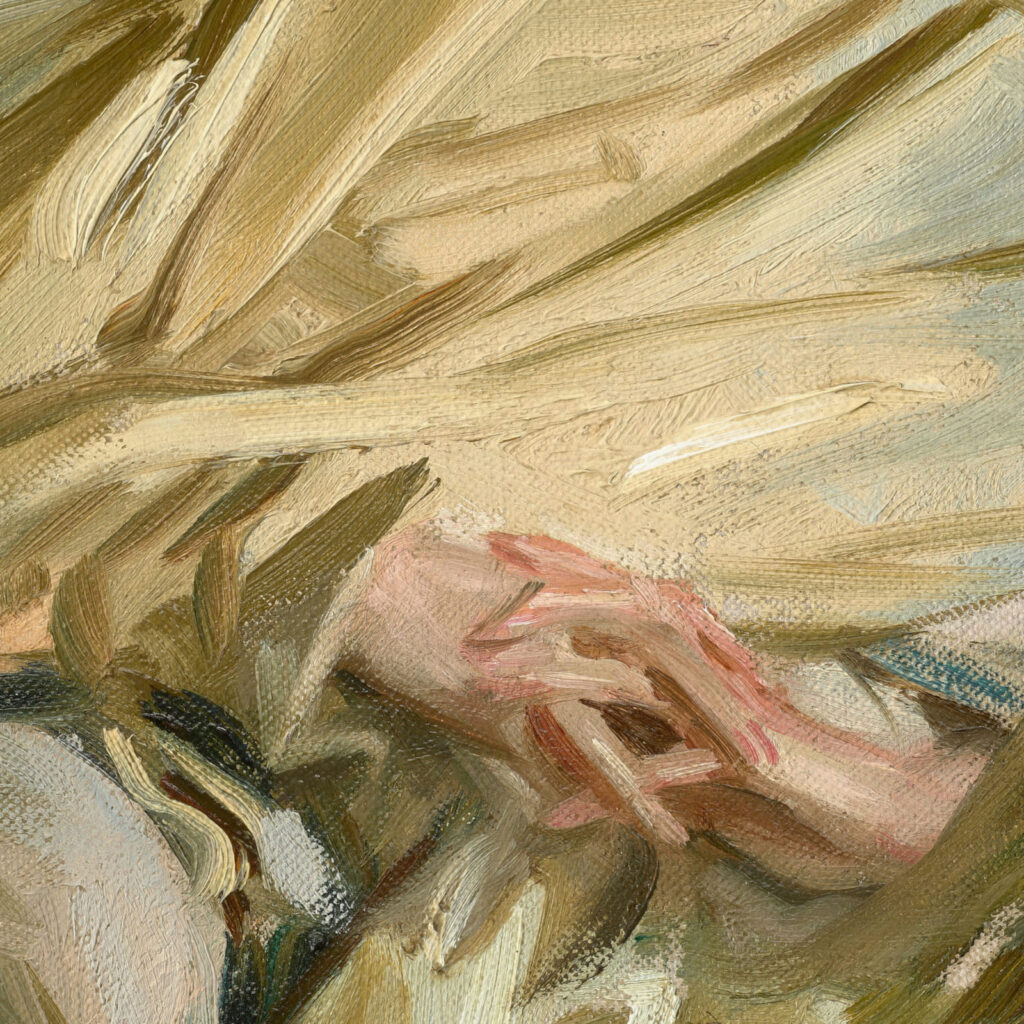
John Singer Sargent, Nonchaloir (Repose), 1911, National Gallery of Art, Washington, DC, USA. Detail.
The painting’s title, Nonchaloir, is interesting because it is not a modern French word but an old archaic French word that means carelessness, negligence, and inaction. However, “nonchaloir” perfectly describes the unpretentious portrait of an aristocratic young woman discovered in a languorous private moment.
Sargent originally titled the painting Nonchalance but changed it to Nonchaloir when he submitted it to the 45th Exhibition of Modern Pictures held by the New English Art Club in London, UK. Some scholars believe the title was changed because “nonchaloir” plays upon “châle,” the modern French word for a shawl. This wordplay would be appropriate because Rose-Marie’s patterned shawl dominates the foreground.
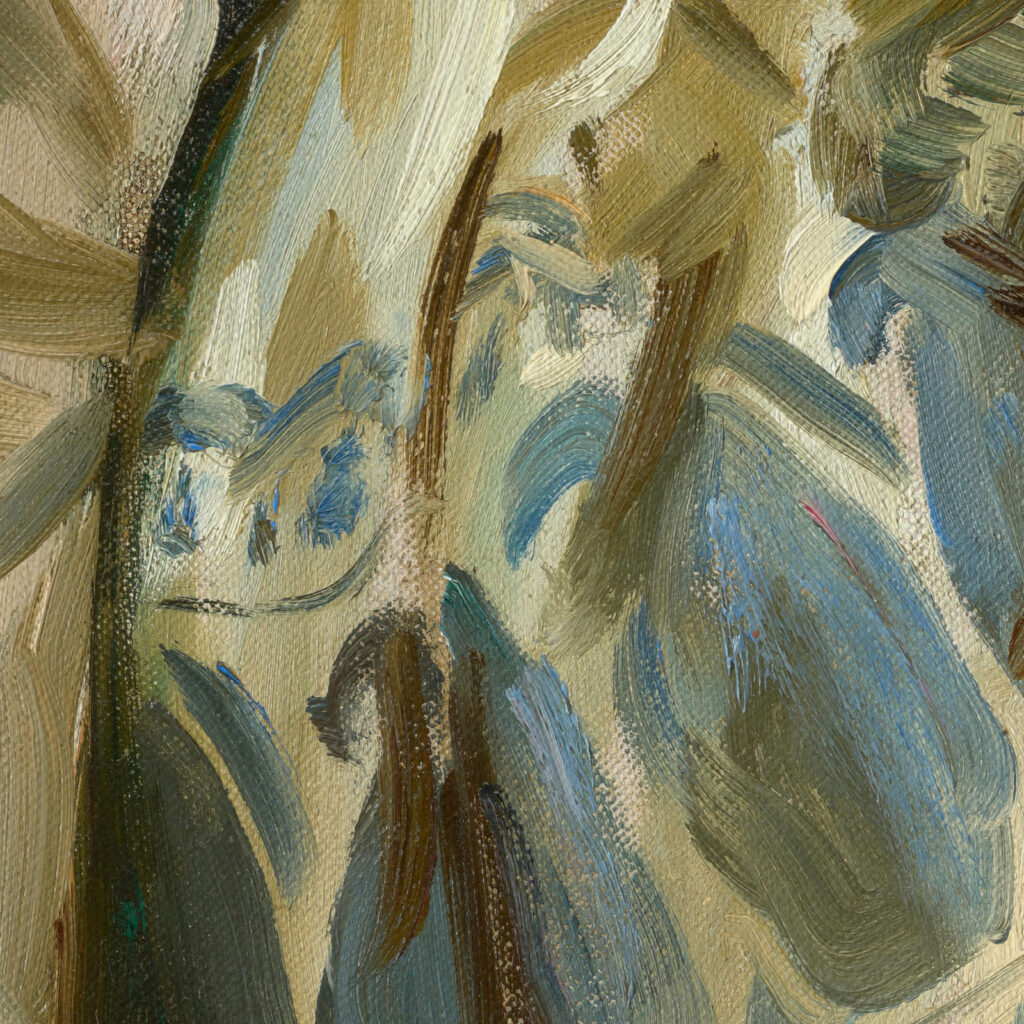
John Singer Sargent, Nonchaloir (Repose), 1911, National Gallery of Art, Washington, DC, USA. Detail.
The shawl wrapped around Rose-Marie’s torso and shrouding her lap is a visually rich element of the painting. Its rhythmically circular border echoes the plush upholstery of the loveseat and the green and gold colors of the room. It ties the patterns and colors of the scene together while its cascading fabric energizes the motionless moment.
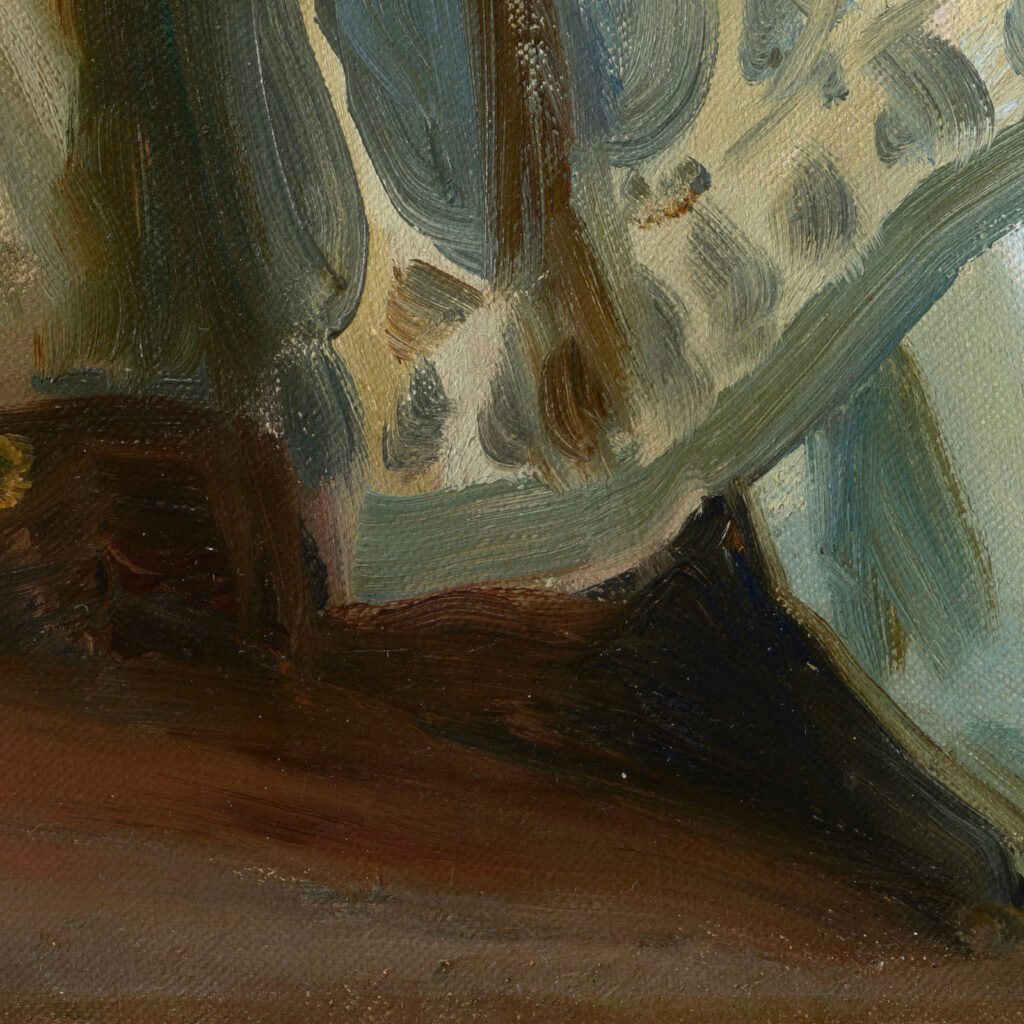
John Singer Sargent, Nonchaloir (Repose), 1911, National Gallery of Art, Washington, DC, USA. Detail.
The shawl acts not only as a visual linchpin but also as a status symbol in the scene. Indian Kashmir shawls, like the one featured in Nonchaloir, were considered a luxury fashion item from the 1770s to the 1870s. They were exotic, expensive, and exclusive to own. However, by 1911, when this masterpiece was painted, Indian Kashmir shawls were no longer in vogue because they were 30 to 40 years past their peak demand. They were considered old-fashioned.
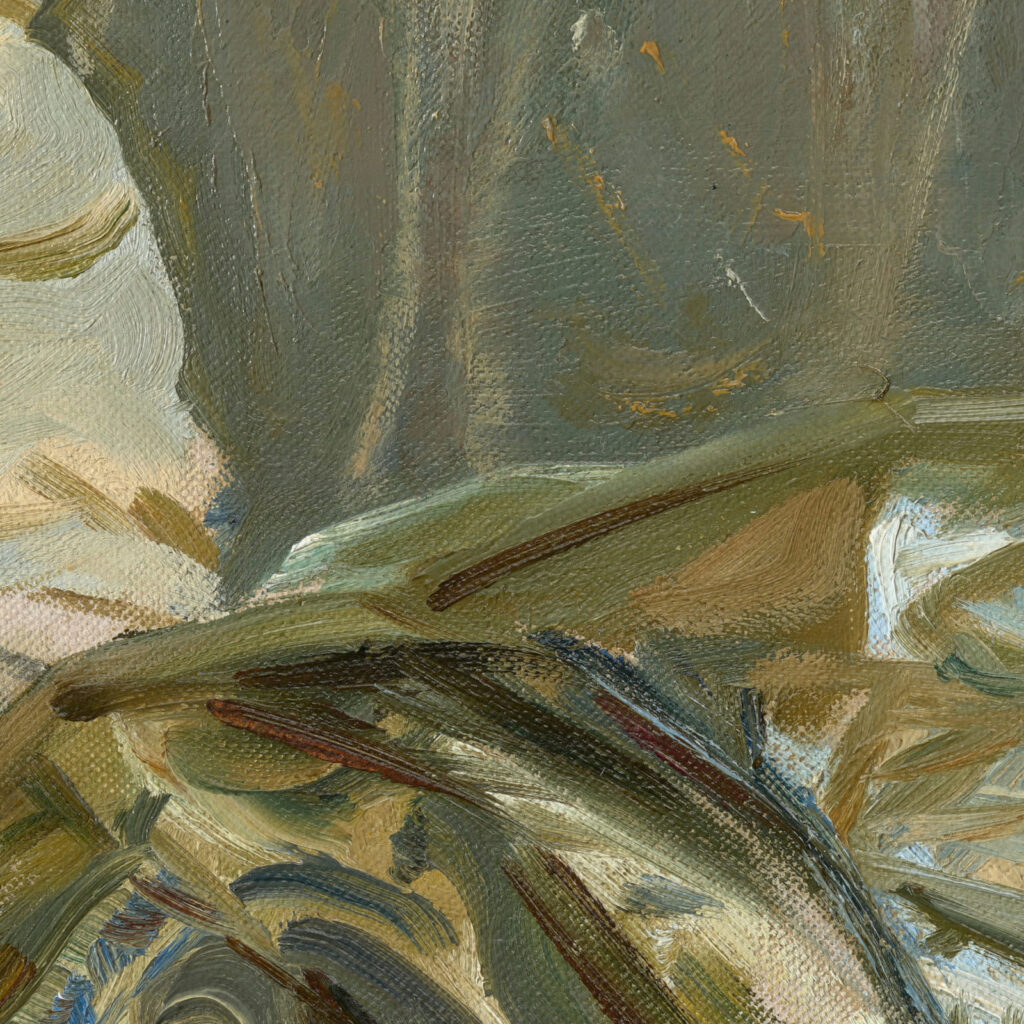
John Singer Sargent, Nonchaloir (Repose), 1911, National Gallery of Art, Washington, DC, USA. Detail.
Therefore, perhaps Rose-Marie is wearing her mother’s old shawl to lounge around the house and casually nap. Or possibly Rose-Marie had an old soul that appreciated old-fashioned tastes? Regardless, the fashion item was no longer trending but still signified the scene’s lingering gentility and elegant indulgence. It hints at an Edwardian world demarcated by heritage, wealth, and refinement that would later be shattered in 1914 by WWI.
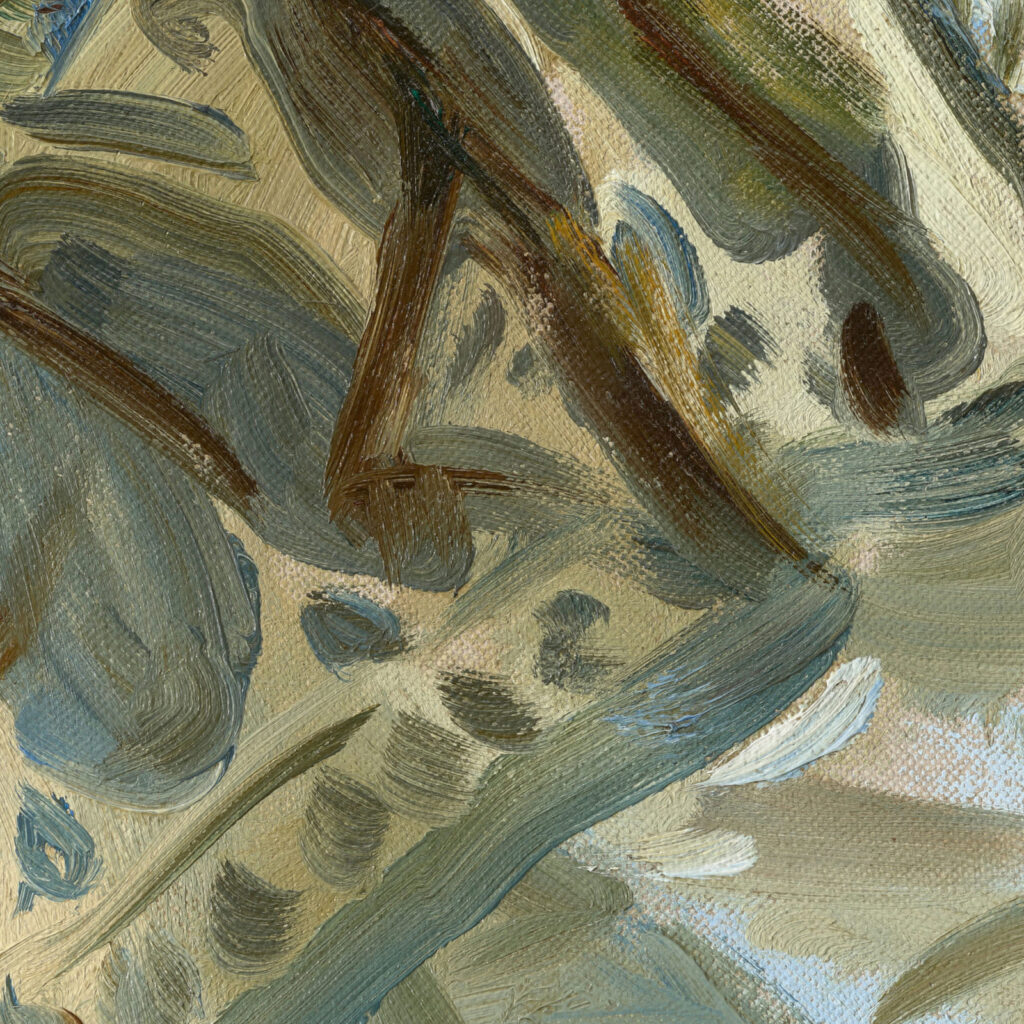
John Singer Sargent, Nonchaloir (Repose), 1911, National Gallery of Art, Washington, DC, USA. Detail.
John Singer Sargent greatly admired Jacques-Louis David and Jean-Auguste-Dominique Ingres, two of the most famous Neoclassical painters of the late 18th and early 19th centuries. David and Ingres lived and worked almost a century before Sargent but their visual legacy endured, as seen in this painting.
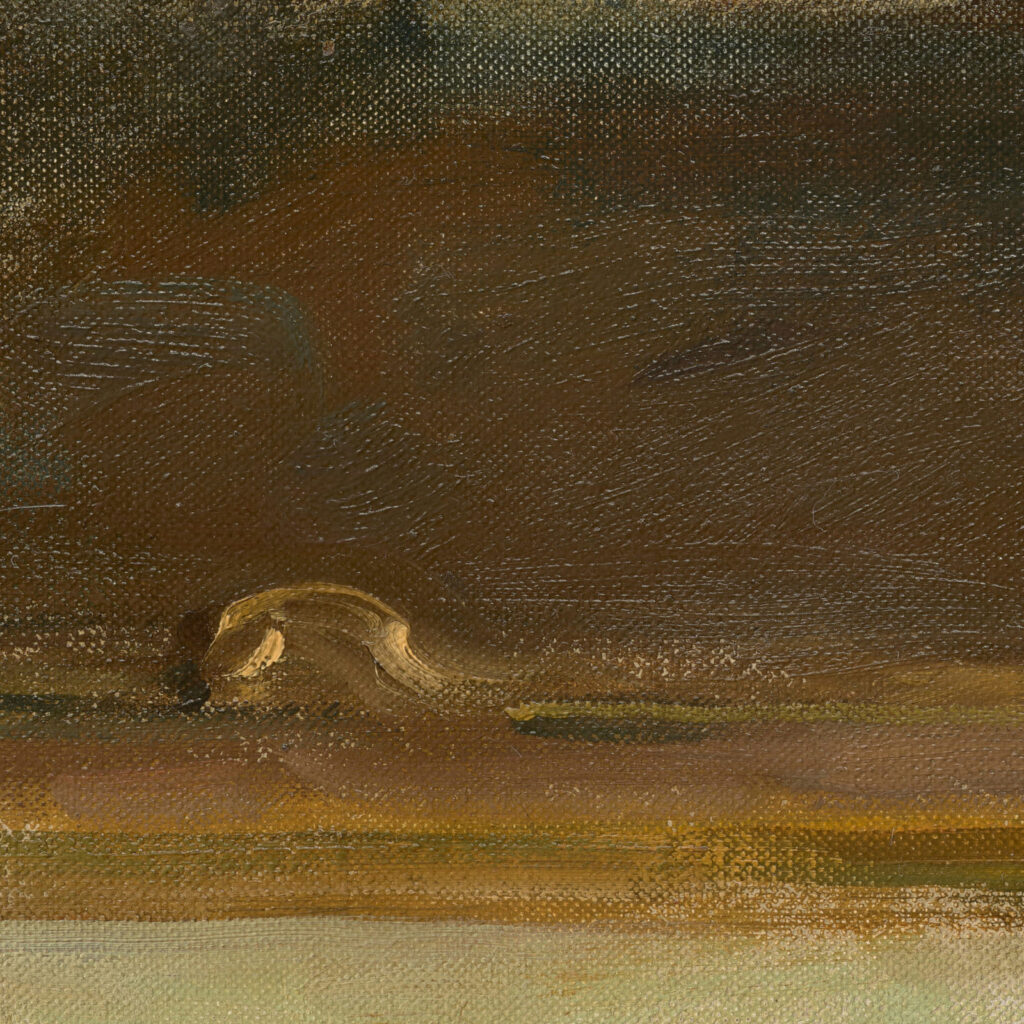
John Singer Sargent, Nonchaloir (Repose), 1911, National Gallery of Art, Washington, DC, USA. Detail.
First, the painting is dominated by a typical Neoclassical color scheme of pale green, white, gold, and gray.
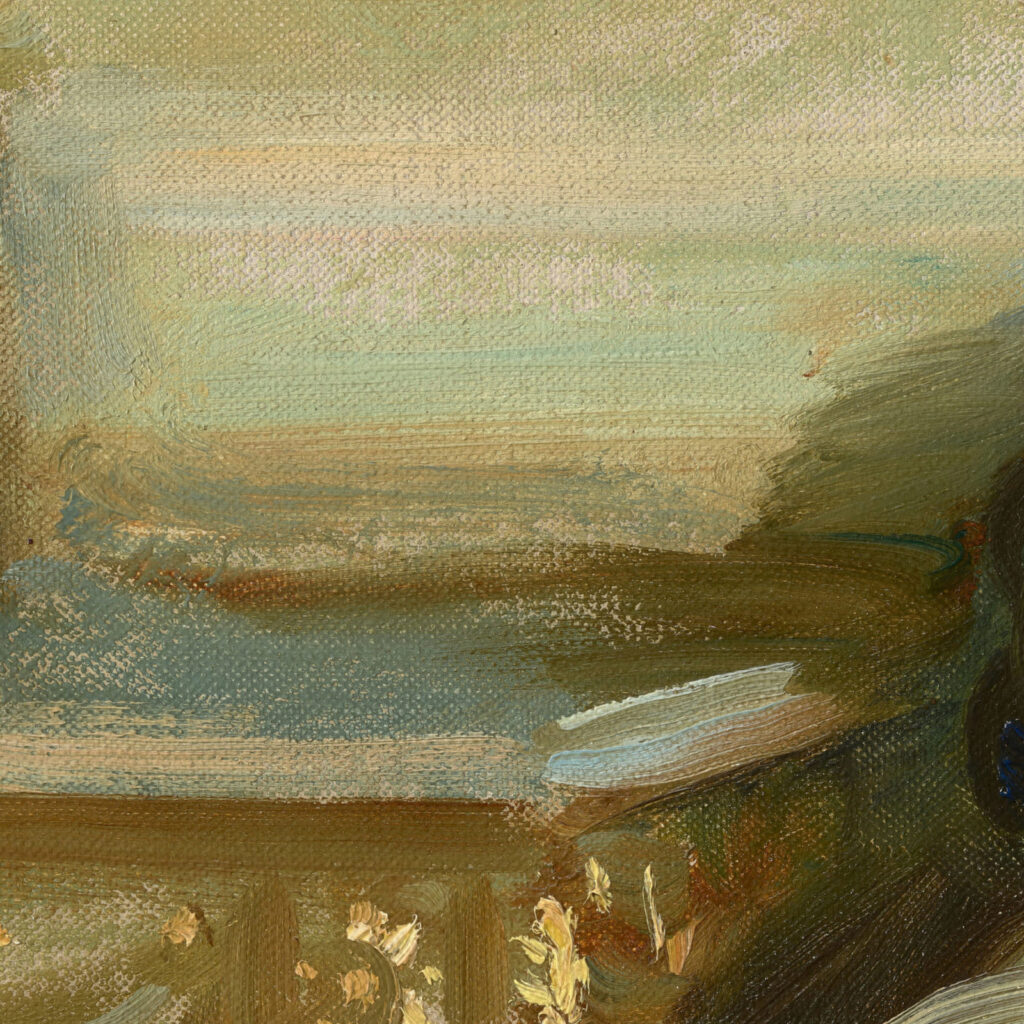
John Singer Sargent, Nonchaloir (Repose), 1911, National Gallery of Art, Washington, DC, USA. Detail.
Second, the painting features a typical Neoclassical subject of a reclining woman. David created his famous Madame Récamier, and Ingres painted his celebrated Grande Odalisque.
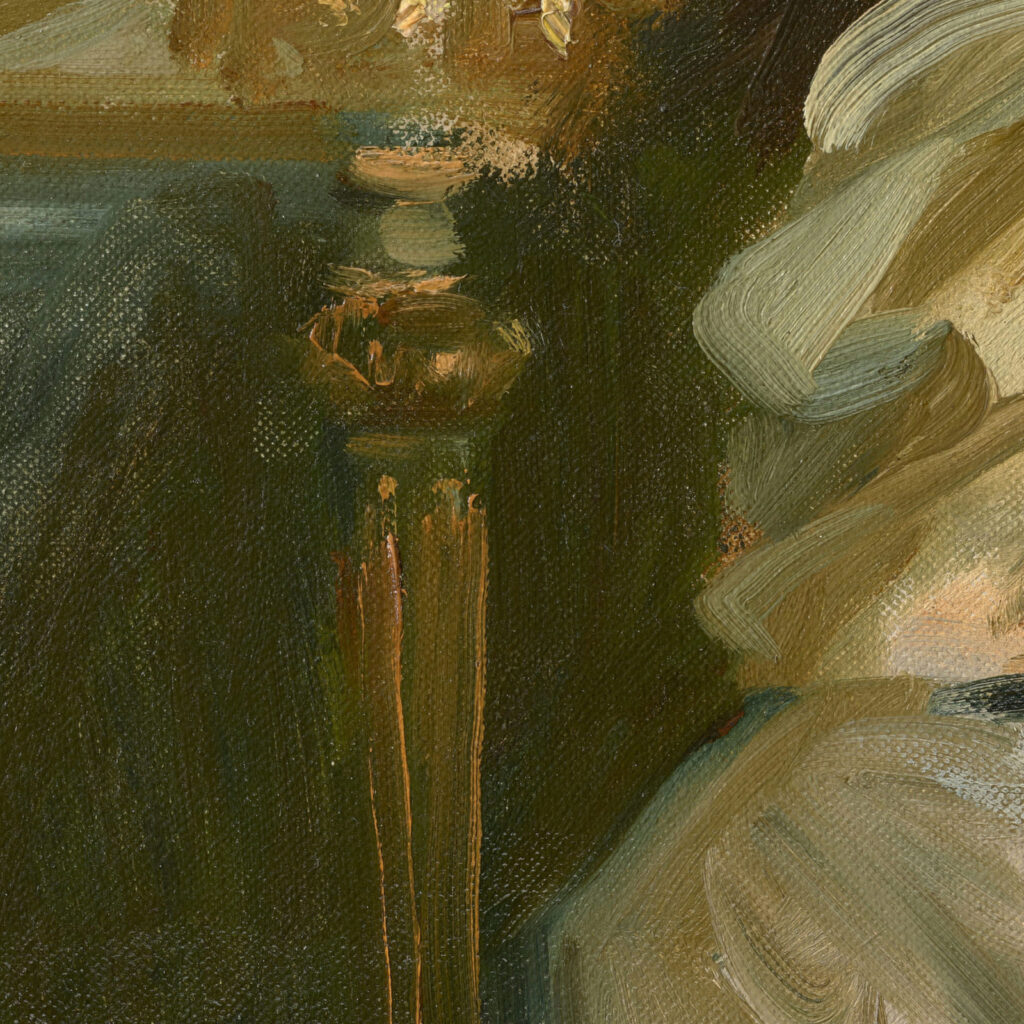
John Singer Sargent, Nonchaloir (Repose), 1911, National Gallery of Art, Washington, DC, USA. Detail.
It could be easily argued that Nonchaloir (Repose) is Sargent’s addition to the Neoclassical movement but captured through an Impressionist interpretation. It is a masterpiece of American Impressionism.
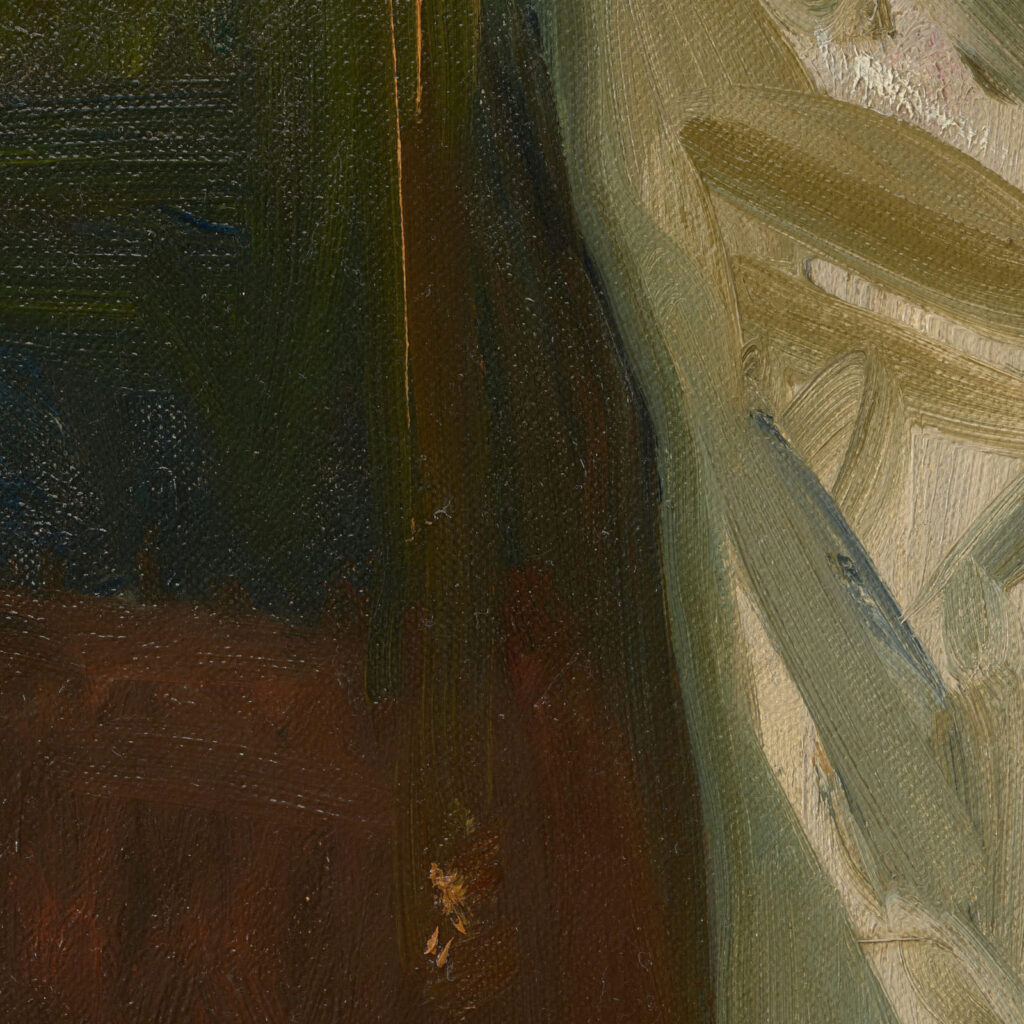
John Singer Sargent, Nonchaloir (Repose), 1911, National Gallery of Art, Washington, DC, USA. Detail.
What would Sargent think if he knew that one century later, over three million visitors every year visit the National Gallery of Art in Washington, DC, USA, to admire Nonchaloir?
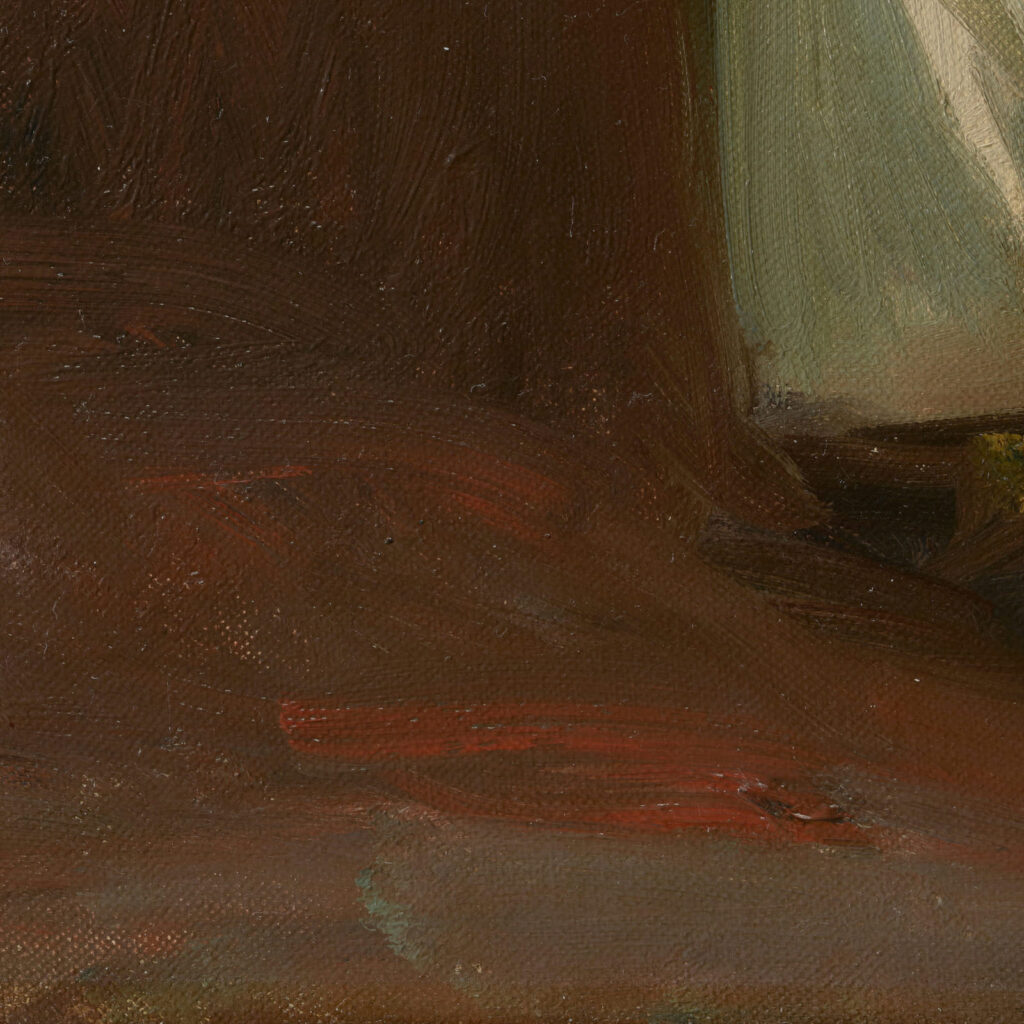
John Singer Sargent, Nonchaloir (Repose), 1911, National Gallery of Art, Washington, DC, USA. Detail.
Nonchaloir, National Gallery of Art Online Collection. Retrieved 19 April 2024.
Self-Portrait, Google Arts & Culture. Retrieved 21 April 2024.
Robert Wilson Torchia, Deborah Chotner, and Ellen G. Miles. American Paintings of the Nineteenth Century: Part II, New York, NY: Oxford University Press, 1998.
DailyArt Magazine needs your support. Every contribution, however big or small, is very valuable for our future. Thanks to it, we will be able to sustain and grow the Magazine. Thank you for your help!